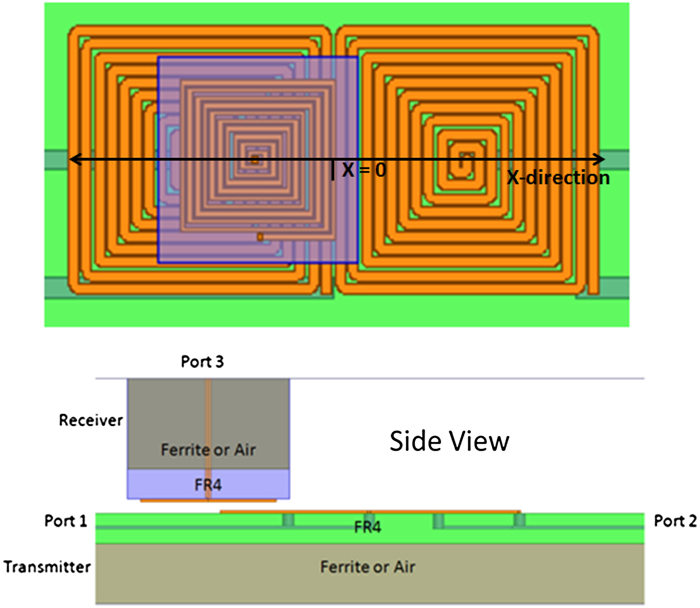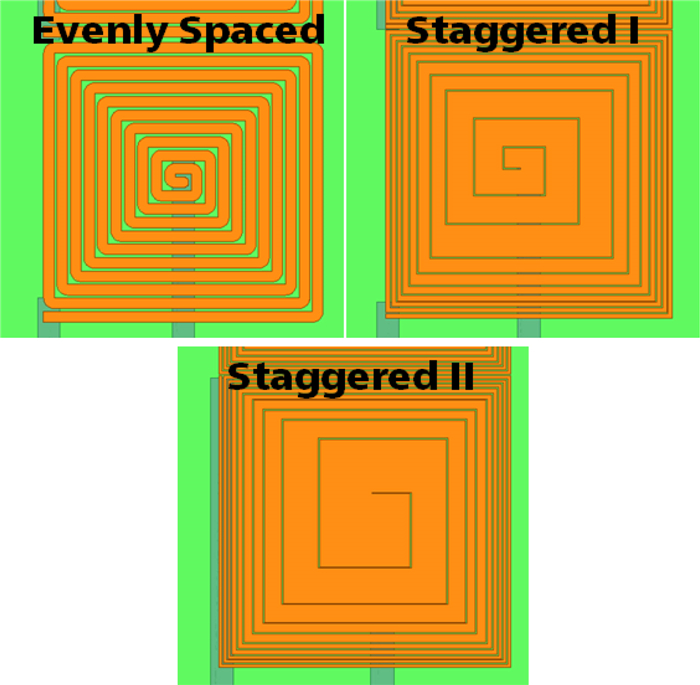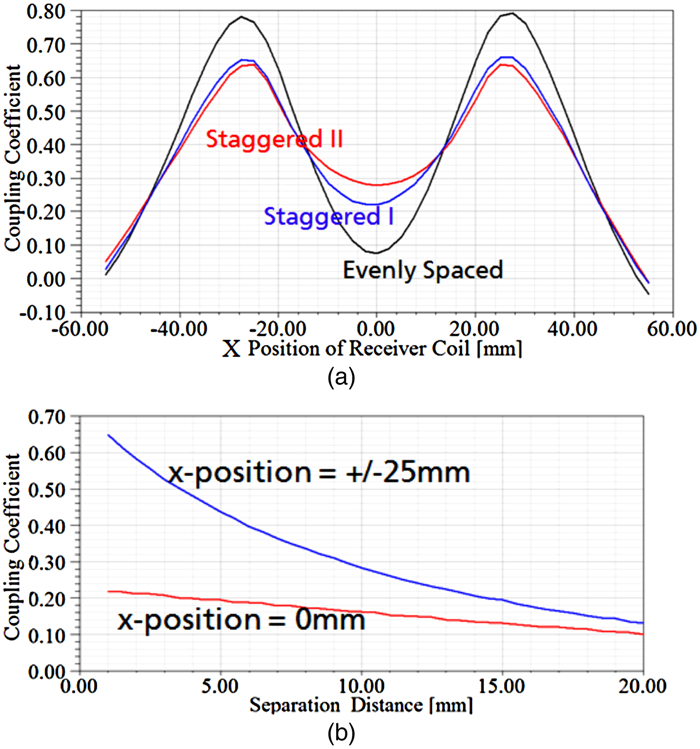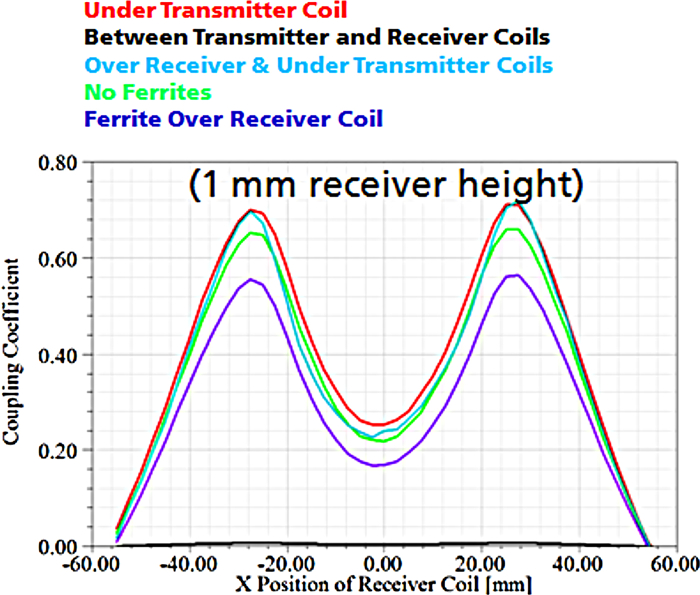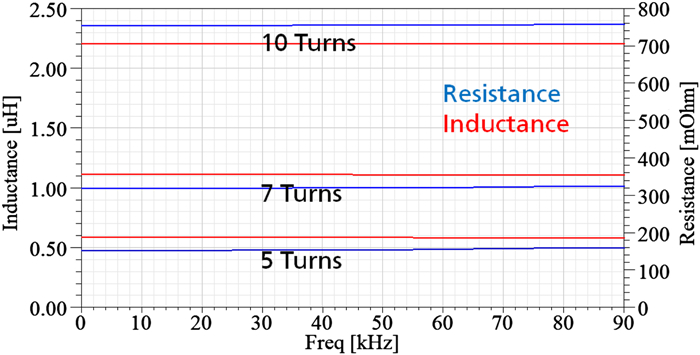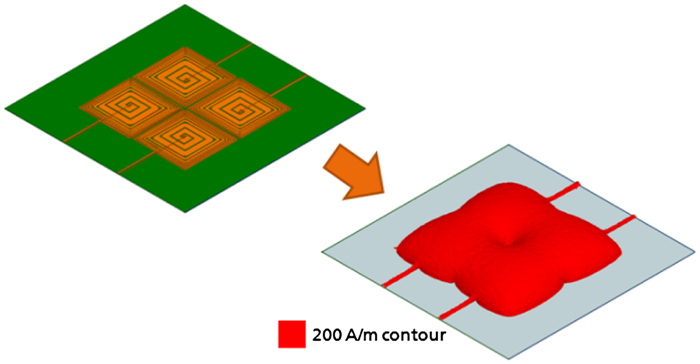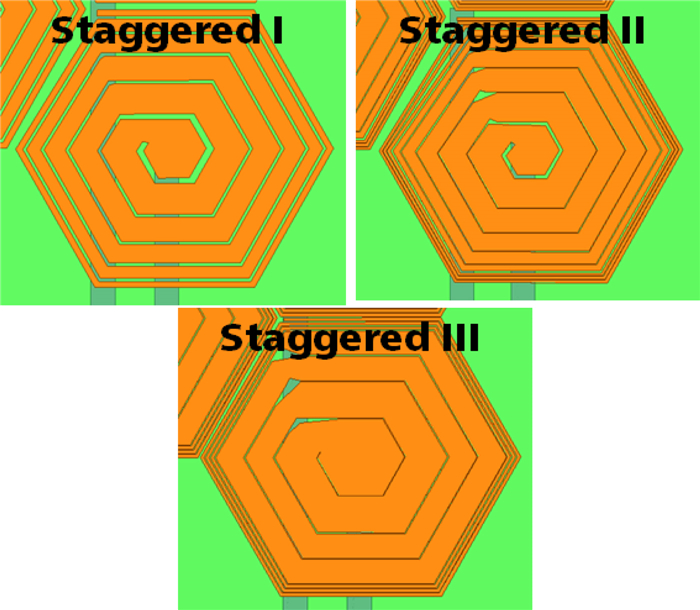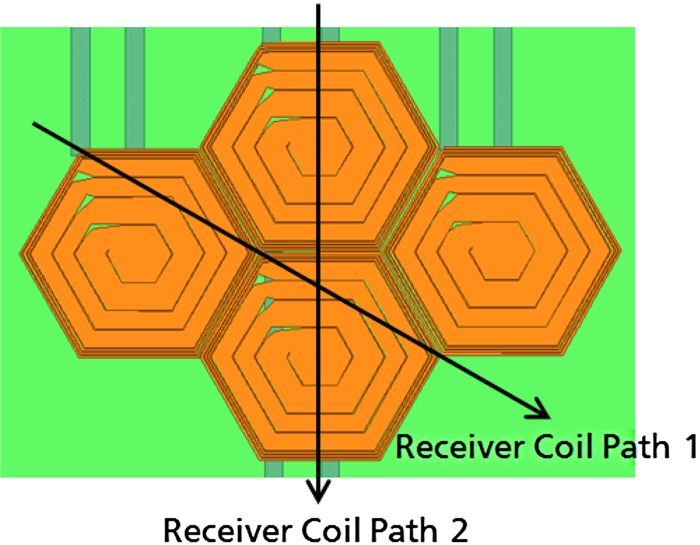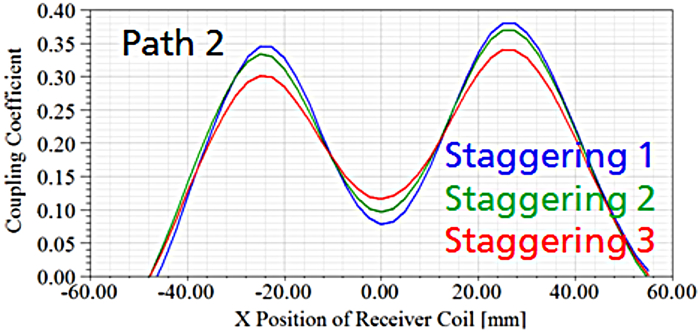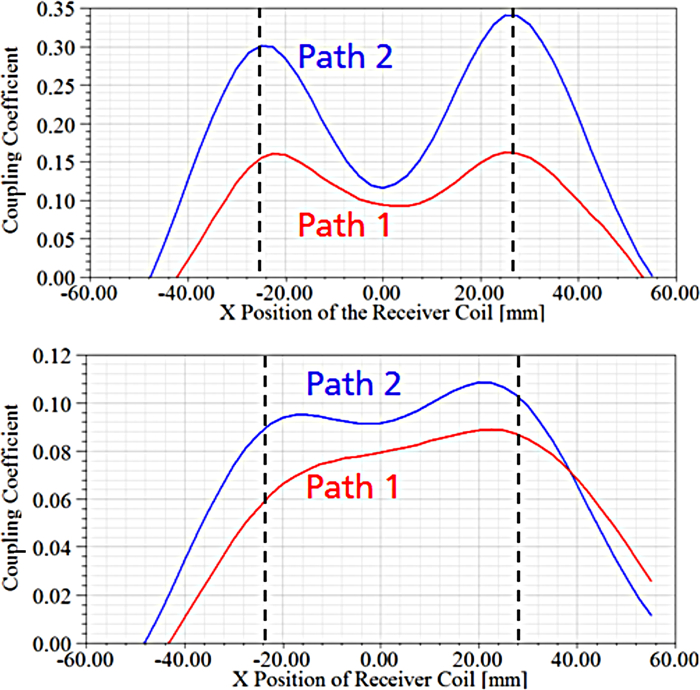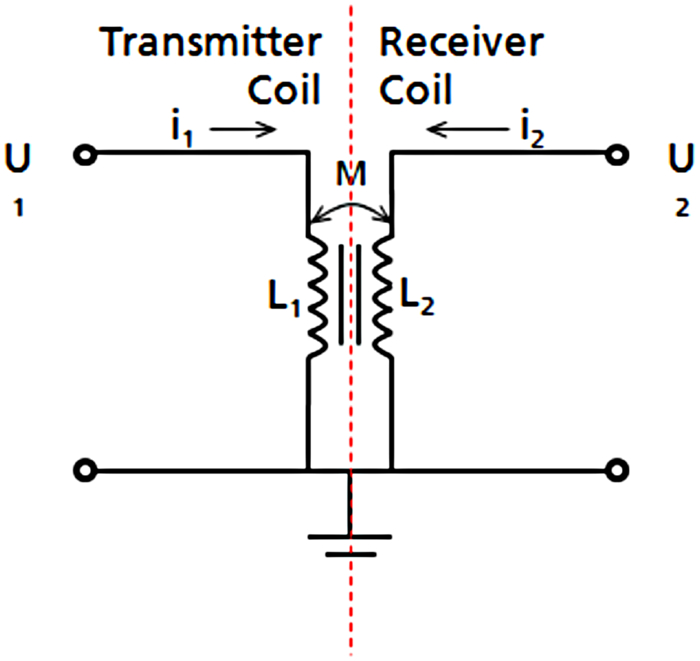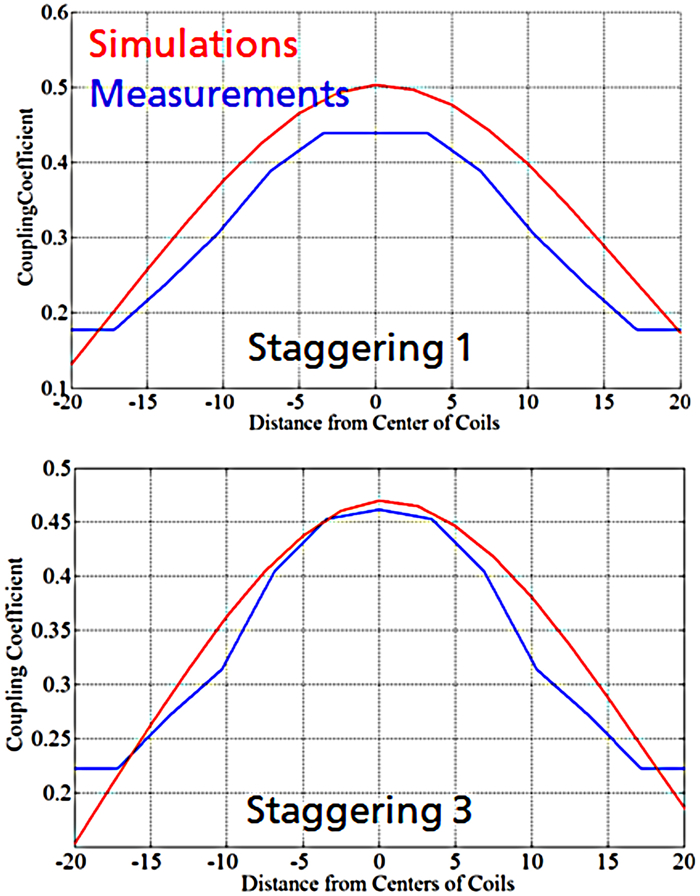-
About this article
Cite this article
Curran B, Maaß U, Fotheringham G, Stevens N, Ndip I, et al. 2015. Modeling and characterization of PCB coils for inductive wireless charging. Wireless Power Transfer 2(2): 127–133 doi: 10.1017/wpt.2015.14
Modeling and characterization of PCB coils for inductive wireless charging
Abstract: Wireless charging is emerging as a viable technology in many industries, including consumer, medical, and sensor electronics. An investigation of design principles is conducted for a wireless charging platform that is designed to charge devices of different sizes and technologies, using only through vias. It is shown that at a 5 mm separation distance, a coupling coefficient can be achieved which varies from 0.12 to 0.37 when staggered hexagonal transmitter coils (approximately 5 cm across) are used with an unstaggered square receiver coil, which declines to 0.06–0.11 at 2 cm separation. Without design measures, the coupling coefficient will approach zero at certain positions. The quality factors of the coils can be improved by stacking the coils in parallel, enabling the use of only through-vias, while the inductance can be controlled horizontally by increasing the number of turns in the inductor.
-
Key words:
- Wireless power transfer









 Brian Curran received his B.S. in electrical engineering from the University of Rochester, New York, his M.S. from the University of Kassel, Germany and his doctor of engineering from the Technical University of Berlin. He has worked at the Fraunhofer Institute for Reliability and Microintegration since 2008. His research includes signal and power integrity, antenna design and integration and electromagnetic compatibility
Brian Curran received his B.S. in electrical engineering from the University of Rochester, New York, his M.S. from the University of Kassel, Germany and his doctor of engineering from the Technical University of Berlin. He has worked at the Fraunhofer Institute for Reliability and Microintegration since 2008. His research includes signal and power integrity, antenna design and integration and electromagnetic compatibility 


